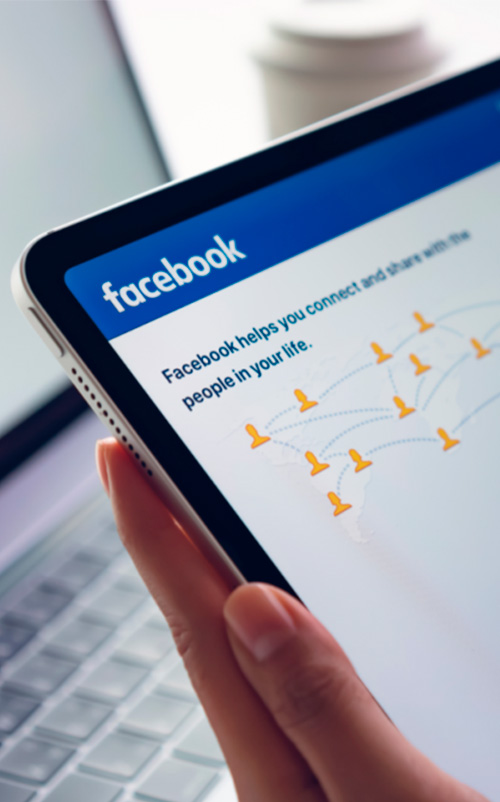Google Ads (formerly known as AdWords) is Google’s pay-per-click platform. Initially consisting of text ads only, it now includes image and video ads on YouTube as well.
It started in the year 2000 and generates more than 90% of Google revenue annually (Q4 2018).
Businesses use Google Ads to place both text, image and video ads that drive more visitors to their website and potentially more customers for their business.
Before delving into what Google Ads (former Adwords) is and how it works, let’s see a fantastic 2-minute summary video that will help you better assimilate the concepts. Because after all, they say that a picture is worth a thousand words. Hello!
Perfect! Now we can go into how Google Ads works in more detail. We have another article where we go into detail how to create the best AdWords campaign structure.
The most common ads are text ads, which appear both above and below the results, followed by image ads, and then video ads.
Text ads account for approximately 20% of all clicks on any search and are a customer acquisition channel used by millions of businesses, both large and small, offering all kinds of services and/or products.
Google Ads: King of Inbound… and Outbound Marketing
Inbound marketing is when the user is searching for our product or service on Google (or other internet search engines).
The other type of marketing, outbound marketing, is when we show the service or product that our company offers without the user having asked to see it – such as sending postcards, showing video ads on YouTube or image ads on social networks or on other web pages that meet a certain profile.
Inbound marketing (when they are looking for us) has a lower cost per acquisition than outbound marketing (when we are looking for them).
Let’s start with… inbound marketing (ads on Google)
The best known part of Google Ads is the ads in the search engine, or as we already know, the so-called inbound marketing. So let’s start discovering the fascinating world of Google Ads text ads that appear above Google results.
More than 60% of all Google searches are done from mobile phones.
It all starts when someone searches for something on Google… anything.

AdWords (as Google Ads used to be called) has a central element – so-called keywords. Keywords, or terms, are what the advertiser is willing to pay for when the Google user types them and clicks on the ad. The user can type anything into Google – from buying shoes, to directions to a restaurant or a video of La Macarena for example.
Advertisers create lists of words that indicate intent to purchase their product or service, and when the user types the term and clicks the ad, the advertiser pays.
The terms in which you bet are those that indicate purchase intention and usually start with words such as buy.
For a shoe store, for example, a typical term you would bet on would be buying trendy shoes.
The advertiser creates a list of terms. When someone types one of them, the ad appears and if clicked, it generates a cost for the advertiser.
Google matches the terms present in the search with the keywords present in the campaigns of Google AdWords advertisers.
If it finds that there is a keyword that matches the search terms, Google’s algorithm will then evaluate two factors of the keyword present in the advertiser’s AdWords account – the bid and the quality score.
As there is only space for up to 6 ads, 4 above the results and 2 below, the algorithm will choose those 6 keywords with the highest bet plus quality score combination and present their corresponding ads.

Now the user has a choice – or rather, they have 17 options, 17 results on the first page for the search performed (19 if it is a local intent search). 4 text ads at the top of the page, followed by 3 local results if Google deems that the search has local intent, followed by 10 organic results and up to three additional ads at the bottom of the page.
Due to the high degree of competitiveness that exists to be able to appear in the ten organic results, Google AdWords -the top 4 results- is an ideal source of traffic for large or small companies, whatever the service or product they offer.

Cuanto más específico y completo sea el anuncio, más clics recibirá lo que se traduce en un menor coste por clic a medio plazo.
Podemos ver aquí abajo un anuncio bien hecho; con sus extensiones, ocupando todo el espacio disponible, y un anuncio mal hecho.
El anuncio bien hecho es más barato, porque más gente le da clic y eso Google lo premia abarantando el coste: ¡un doble beneficio!.

Ya conocemos los anuncios de texto de Google Ads, ¡fantástico! Ahora, conozcamos los anuncios de imagen que ofrecen una alternativa muy interesante y rentable para la mayoría de industrias y empresas, sin importar su tamaño.
Estás leyendo tu diario favorito en internet y ¡plas!, ves una imagen junto al artículo que te llama la atención. Estos son los denominados anuncios de imagen de Google Ads.

Sin embargo…. ¿alguna vez has hecho clic en los anuncios de imagen que te encuentras en las páginas web que visitas? Seguramente tu respuesta es un rotundo no.
Más del 95% de los anuncios de imagen que se muestran no son relevantes
Este dato y realidad destacan la importancia de crear campañas de texto y de imagen orientadas a nuestra audiencia.
Para que nuestro anuncio sea relevante, hemos de decirle a Google que lo ponga en las páginas web que nuestros clientes visitan, o bien lo ponga en artículos que hablan de nuestro producto/servicio.
Un ejemplo: Si tenemos una empresa de jardinería, le diremos a Google que ponga las imágenes en páginas web que venden productos de jardinería, o bien en blogs y artículos relevantes a mi industria. Esto hará que las personas que vean mi imagen la encuentren relevante y sea más probable que le den clic.
Es importante recordar que al igual que los anuncios de texto:
Si la gente no le da clic a mi imagen, Google no me va a cobrar por haberla mostrado.
Para profundizar más y saber cómo realizar una exitosa campaña de anuncios de imagen en Google Ads, recomendamos la lectura de un artículo donde vamos paso a paso en mucho detalle. Puedes leerlo haciendo clic aquí: Como crear anuncios de imagen efectivos.
Cuando el usuario hace clic en el anuncio de texto o de imagen, ahora se convierte en un cliente potencial que puede comprar el producto o servicio ofrecido por el anunciante.
Si el precio pagado por los clics, dvidido por el importe generado por ellos es superior al margen de venta que tiene el anunciante, Google Ads es un canal con una rentabilidad positiva y se convierte así en un canal indispensable para la estreategia de marketing de cualquier empresa.
Optimizar constantemente las campañas es fundamental para que éstas tengan el mayor restulado posible. Kolau ofrece uno de los motores de optimización automática más potente y es el único que ofrece un plan gratuito.
Para resumir, Google Ads es sin duda un gran canal para la adquisición de clientes, y debido a su alta rentabilidad para la gran mayoría de industrias y empresas, es una fuenta de tráfico web indispensable.
Xema Solé Solá es un mago y cómico que explica qué es AdWords, cómo funciona y cómo gracias a los motores de Kolau está ganando más y gastando menos.
Google AdWords es el mejor canal para que te encuentren cuando buscan tu producto porque más del 90% de tus clientes hace esta búsqueda en Google.



